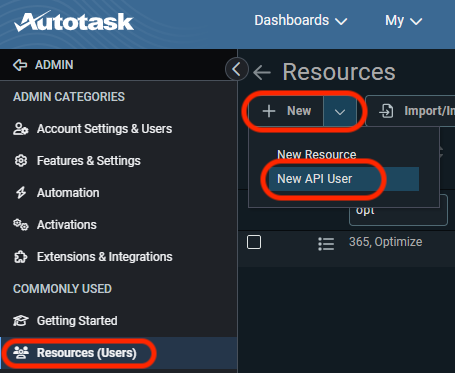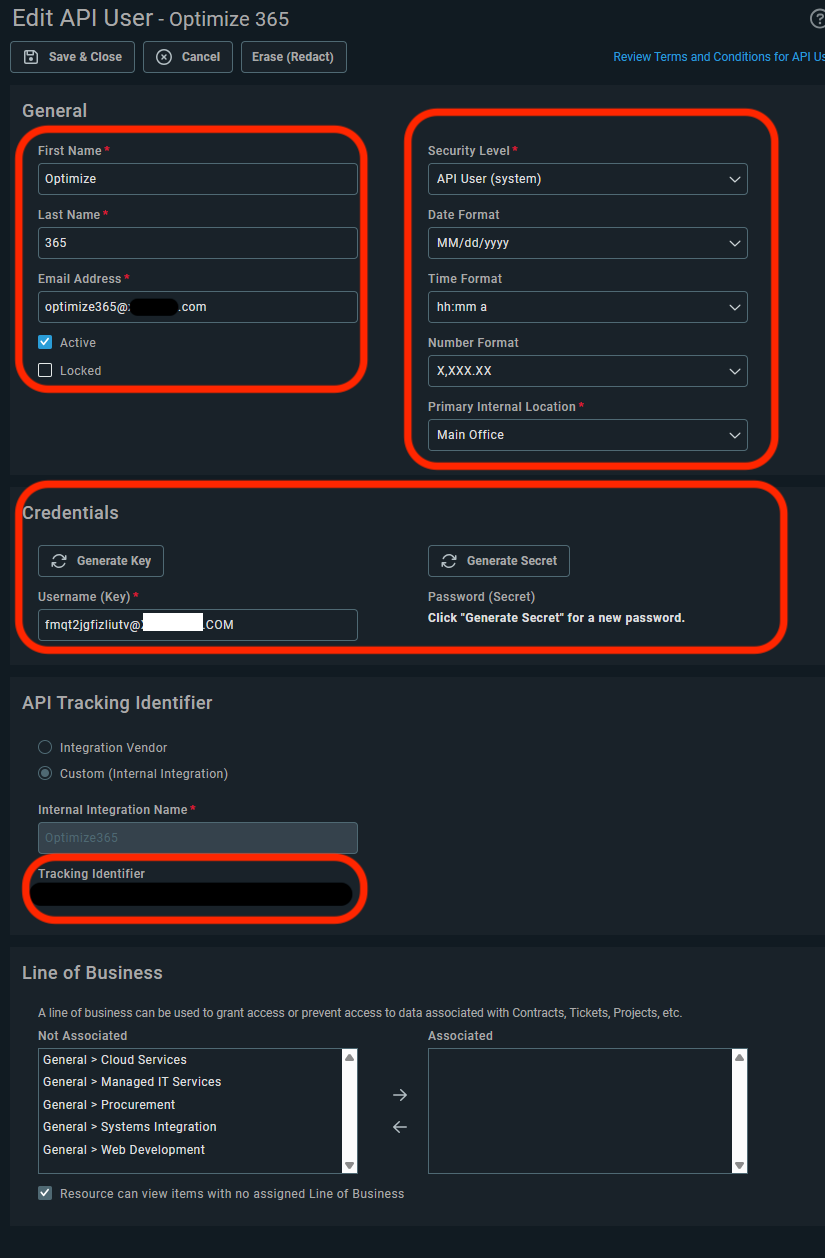How to Create an API User in Autotask PSA (Step-by-Step Guide)
Creating an API user in Autotask is essential when integrating external systems (like Optimize365) with your PSA. This guide walks you through the process, using simple instructions and visuals.
Step-by-Step Instructions
1. Navigate to Admin → Resources (Users)
- Log into your Autotask PSA account.
- Go to the left-hand menu:
ADMIN → Resources (Users)
2. Click the ”+ New” Button and Choose “New API User”
- Click the dropdown arrow next to the + New button.
- Select New API User.

3. Fill Out the General Information
In the “Edit API User” window:
- First Name: e.g.,
Optimize - Last Name: e.g.,
365 - Email Address: Can be fake or internal (e.g.,
[email protected]) - Check the box Active
- Uncheck Locked (unless needed)
4. Set Security Level & Format Options
- Security Level: Choose
API User (system) - Set date/time/number formats as per your preference
- Primary Internal Location: Select the appropriate office
5. Generate API Credentials
Under Credentials:
- Click Generate Key → copy this
Username (Key) - Click Generate Secret → copy this
Password (Secret)
These credentials will be used to authenticate your API requests.
Save them securely – you won’t be able to retrieve the secret again.
6. Set the API Tracking Identifier
- Choose:
Custom (Internal Integration) - Internal Integration Name: e.g.,
Optimize365 - Provide a unique Tracking Identifier (e.g.,
optimize-integration)

7. Optional: Assign Line of Business (if needed)
- You can assign specific lines of business to limit data access.
- Or check “Resource can view items with no assigned Line of Business” if unsure.
8. Save the API User
Click Save & Close at the top.
You’ve now created a fully functional API user for integration!
Official Autotask Documentation
- Autotask API User Setup Guide (Datto Docs)
- Autotask REST API Overview
- Security Levels and Permissions
Security Note
Never share your API key and secret publicly. Always store them in a secure password manager or secret vault (e.g., Azure Key Vault, AWS Secrets Manager).